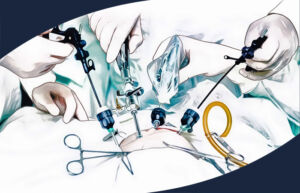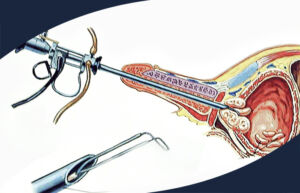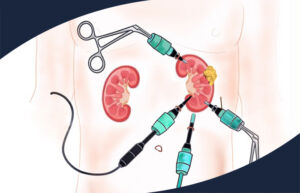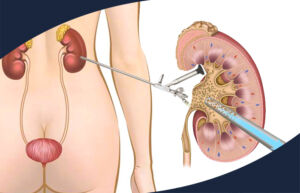PROSTATE ENLARGEMENT
Benign Prostate Hyperplasia (BPH)
Benign Prostatic Hyperplasia (Benign enlarged prostate) generally develops benign. Prostate enlargement begins in the 50s and continues until the end of life. It has also been observed that the average age sometimes decreases in prostate enlargement. The reason for the growth is not known exactly.
What are the symptoms of an enlarged prostate?
* Burning and straining while urinating
• Forked urine
• Decrease in flow strength and pressure of urine compared to normal
• Intermittent urination
* Feeling of not fully emptying and fully relaxing after urinating
• Frequent urination at night
• Using the toilet frequently during the day
• Difficulty and / or incontinence in urination
• Difficulty reaching the toilet
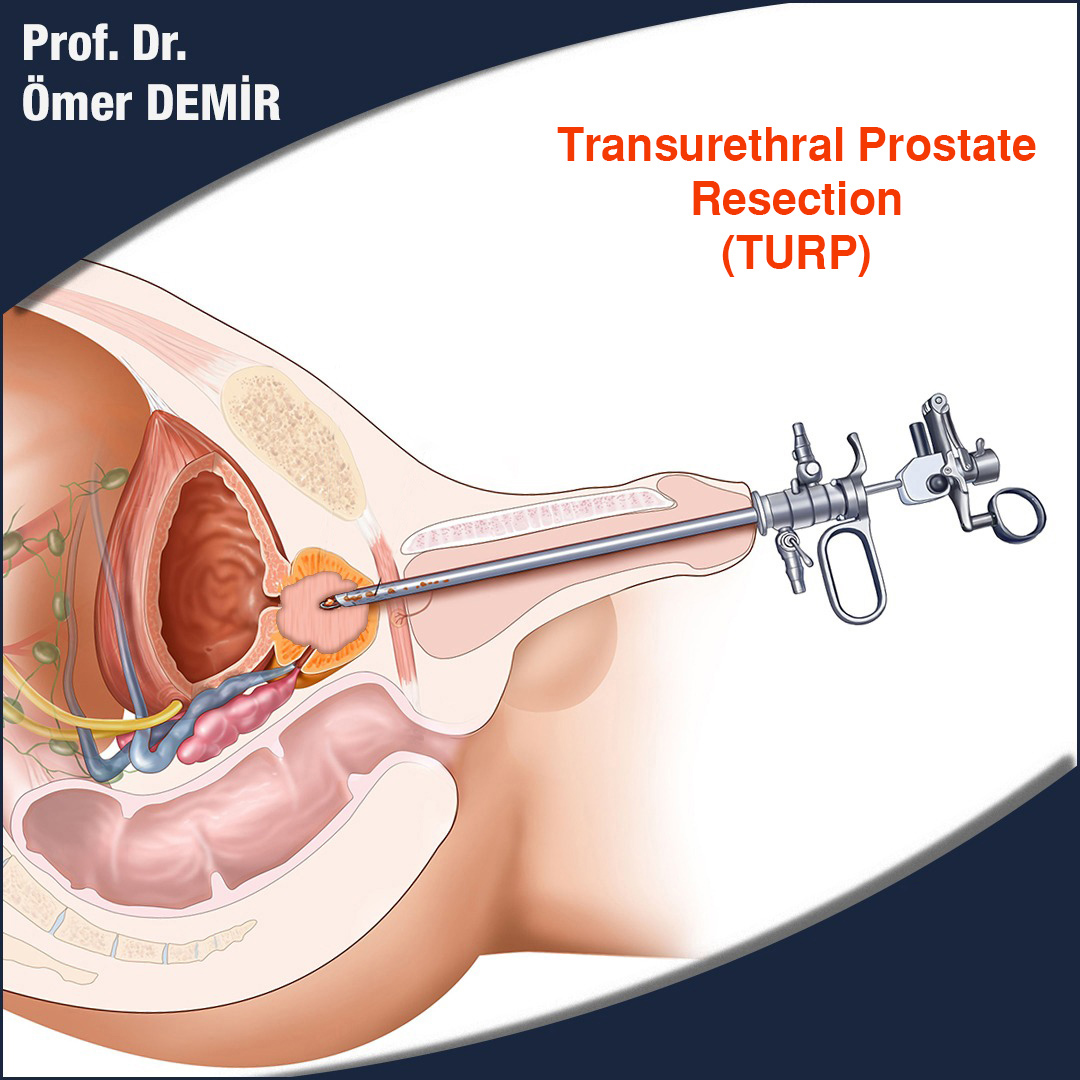
Prostate diagnosis?
In prostate enlargement, a physical examination is usually performed first and the medical history of the person is listened. The physical exam includes a rectal exam, where the physician looks at the size and shape of the prostate. Urine analysis, PSA (Prostate specific antigen) measurement, urination rate measurement (Uroflowmetry) and ultrasonography can be used as an advanced examination to obtain more reliable results and definite diagnosis of the disease.
Urination rate measurement (Uroflowmetry)
It is very important to be able to determine the obstruction due to the prostate at this stage. Uroflowmetry, a computer-based measuring system, measures your urine flow rate. This test is done to determine whether the prostate is blocking the flow of urine and the degree of obstruction.
Prostate treatment?
Prostate enlargement (BPH) is not a type of cancer, but if left untreated, it can seriously damage the bladder (bladder) and / or kidney function (occasionally both) and leave permanent damage.
Prostate enlargement (BPH) treatment is arranged according to the effect of the disease on the patient and there are many options that we benefit from. These options are; from follow-up and lifestyle changes, to treatment with various medications and surgery options, it is tailored to the patient individual.
Follow-up and Lifestyle Changes
It can be recommended in cases where prostate enlargement (BPH) does not affect the quality of life of the patient and does not cause serious obstruction in the urinary tract. The following recommendations can be made according to the patient’s age, general medical condition and level of discomfort;
• Annual examination and PSA (Prostate specific antigen) follow-up
• Regulation of fluid consumption habits
• Restriction of caffeinated beverages (tea, coffee, carbonated drinks) and alcohol consumption
• Reorganising the usage hours of drugs used for other diseases (especially drugs with diuretic diuretics)
• Various bladder exercise programs
Medication
When enlarged prostate (BPH) negatively affects the quality of life of the patient, various medications can be used in addition to the above recommendations. The drugs used in the treatment of enlarged prostate (BPH) are classified into 2 main groups;
• Alpha-blocker drugs: They reduce the complaints of patients by relaxing the prostate and bladder smooth muscle. Its effects begin early (1-2 weeks on average) after taking the drug. It can be used regularly as long as the patient benefits. Common side effects are dizziness and low blood pressure.
• 5-alpha reductase inhibitors: With their prostate growth-slowing properties, they become effective after long-term use (approximately 6 months). Therefore, it is used with alpha-blocker drugs during this period. Common side effects can be listed as decrease in sexual desire, erection problems, enlargement and sensitivity in the breasts.
Prostate surgery
Prostate enlargement (BPH) is not a cancer, but it is generally a progressive disease and can cause serious health problems such as inability to urinate, recurrent urinary tract infections, blood in the urine and even kidney failure. It is important to be under the control of a Urologist regularly in order to avoid these problems.
In general, surgery is recommended for prostate patients in the following situations;
• Significant impairment in the quality of life of the patient due to prostate enlargement (BPH) and situations in which there is no response to drug therapy
Inability to urinate / obstruction due to prostate enlargement (BPH)
Recurrent bleeding due to prostate enlargement (BPH)
• Encountering recurrent urinary tract infections due to prostate enlargement (BPH)
Development of kidney failure due to prostate enlargement (BPH)
Stone formation in the urinary bladder (bladder) due to prostate enlargement (BPH)
Prostate surgery is often performed by various endoscopic methods known as closed surgery. Disease and patient characteristics may require open surgery method in some cases, but today open surgery is applied to a very limited number of patients. Although the different names and technologies mentioned below are used, the procedure performed in closed prostate surgeries is basically the same. Under anaesthesia (Spinal / Epidural / General) with the help of various instruments, the prostate is reached by entering through the external hole where urine is made, and the inside of the enlarged prostate gland, which presses on the urinary canal (urethra) passing through the prostate, is emptied using various energy sources to ensure that the patient can urinate easily.
TURP- Transurethral Prostate Resection (Monopolar / Bipolar / Plasmakinetic)
It is the most widely preferred and applied closed prostate surgery method in the world. It can be performed using Monopolar / Bipolar / Plasmakinetic energy sources. The energy sources used have their own advantages / disadvantages, and the most important thing here is the equipment and experience of the Urologist who will perform the operation. The main purpose is to remove the inner part of the prostate with the scraping method and create a urinary channel that will provide comfortable urine flow. As the prostate is removed in the form of chips, pathological examination is possible. The operation takes approximately 1-1.5 hours. Most of the patients benefit from surgery. Patients are followed up with a urinary catheter for 1-2 days after surgery. It is important that patients consume 2-3 litres of water per day, especially in the first weeks, in order to prevent possible bleeding and infections.
HoLEP (Prostate Enucleation with Holmium Laser)
As with resection, the main purpose is to create a urinary tract that will relieve urine flow. Here, the prostate is usually divided into 3 parts (right, left and middle lobes) with the help of a laser fiber and thrown into the urinary bladder (bladder), and then the bladder is removed with the help of special devices (morcellator). Pathological examination is also possible with this method. The operation takes approximately 1.5-2 hours. As with the resection methods, patients are followed up with a urinary catheter for 1-2 days after surgery. It is important for patients to consume 2-3 litres of water per day, especially in the first weeks, in order to prevent possible bleeding and infections. Medium-long term surgical results are generally compared with TURP and similar results have been reported. It is especially advantageous in patients with large prostate volume where open surgery is required.
Evaporation of the Prostate: The aim of this method is to evaporate the prostate tissues. Tissue is mostly water and evaporation is achieved by giving high energy focused into the prostate.

